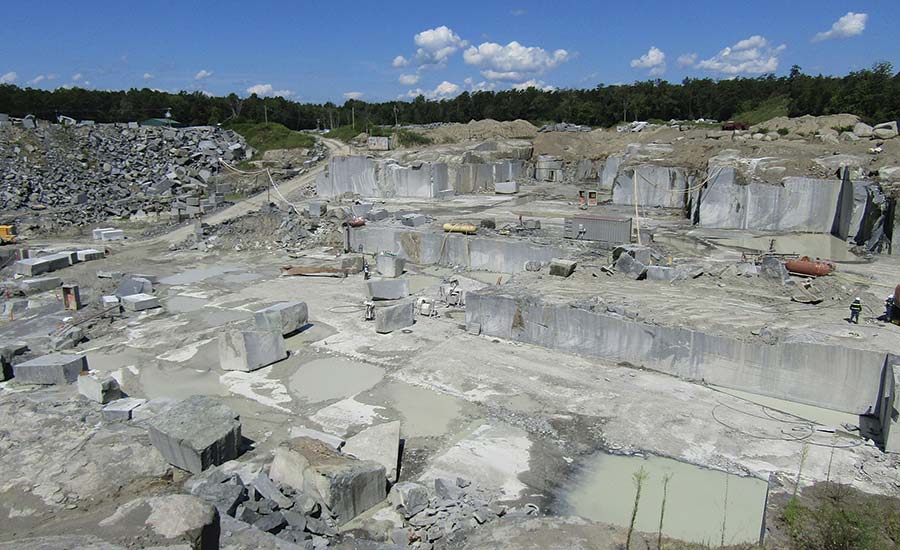Introducing the Mysteries of Granite Quarrying: Where Stamina and Style Meet
The globe of granite quarrying is a realm where the raw strength of nature assembles with human virtuosity to develop structures that stand the examination of time with an air of sophistication. From the midsts of quarries to the meticulous polishing in workshops, the process of transforming granite into architectural wonders is an intricate dancing of tradition and advancement. As we peer right into the midsts of this old craft, we start to reveal the hidden intricacies that shape the very essence of our built environment.
The Origins of Granite Quarrying
In the annals of architectural history, the origins of granite quarrying are shrouded in a tapestry of ancient craftsmanship and geological wonders. Going back to old Egypt and Mesopotamia, the removal of granite from quarries noted the start of a journey that would ultimately lead to the development of several of the globe's most famous frameworks.
Granite quarrying's roots can be traced to the proficient craftsmens who acknowledged the rock's sturdiness and visual charm. Through a combination of primitive devices and large decision, these early quarry workers unearthed granite blocks that would certainly end up being the building blocks of human beings.
As people evolved, so did the strategies of quarrying granite. The Romans, renowned for their design prowess, developed innovative techniques for drawing out granite to construct monoliths, temples, and roadways that stood the examination of time.
The heritage of these old quarrying practices proceeds to form modern style, with granite continuing to be a sign of strength and style in building projects around the globe. (granite quarries in south africa)
Tools of the Quarrying Profession
The development of granite quarrying strategies from old civilizations to modern-day times highlights the important role played by the devices of the quarrying sell shaping the industry's techniques. In ancient times, quarrying tools were simple, frequently including chisels, hammers, and wedges made from materials like bronze or iron. These devices needed considerable workforce and time to extract granite obstructs from quarries.

Additionally, the introduction of pneumatic devices and high-powered equipment has substantially decreased the physical browse around here labor called for in quarrying procedures, enhancing employee security and efficiency. As the quarrying market continues to introduce, the devices of the profession continue to be at the leading edge of driving progression and forming the future of granite extraction.
Drawing Out Blocks of Granite
Making use of accuracy machinery and advanced strategies, the removal of granite obstructs from quarries has ended up being a sophisticated procedure in the modern-day quarrying market. The preliminary step entails determining the place and size of the granite deposit to identify one of the most reliable removal method. When an ideal website is selected, the removal process starts with the exploration of holes for the placement of dynamites. Controlled blowing up methods are then utilized to break apart the granite into manageable areas.

Polishing and Finishing Methods
To accomplish a remarkable surface on granite blocks, competent artisans utilize a collection of precise polishing and finishing strategies. After the first extraction and shaping procedures, the granite obstructs go through a comprehensive sprucing up stage to improve their all-natural beauty and durability.
In addition to sprucing up, ending up techniques are applied to additional improve the granite's appearance. These methods might consist of flaming, honing, or brushing, each offering distinct structures and coatings he has a good point to match various aesthetic preferences. Flaming, for example, includes subjecting the granite surface to high temperature levels to create a rough, textured finish, ideal for outdoor applications where slip-resistance is necessary. Refining, on the various other hand, gives a matte coating that is smooth to the touch, excellent for interior kitchen counters and floor covering. By thoroughly choosing and using these polishing and ending up strategies, craftsmens can transform raw granite obstructs into splendid pieces that showcase both toughness and beauty.

Ecological Influence and Sustainability
With the growing emphasis on environmental consciousness in the sector, granite quarrying methods are significantly inspected for their influence on natural resources and long-lasting sustainability. Quarrying for granite can have significant ecological ramifications. The removal procedure frequently involves making use of heavy machinery, nitroglycerins, and large quantities of water, bring about habitat devastation, dirt disintegration, and water pollution. Additionally, the transportation of granite from quarries to processing facilities creates carbon emissions, better adding to environmental destruction. granite quarries in south africa.
To alleviate these effects and make certain sustainability in granite quarrying, sector stakeholders are taking on different steps. Applying advanced modern technologies to reduce energy usage and water usage, reclaiming quarried land site for environmental reconstruction, and advertising responsible sourcing techniques are some methods being used. In addition, certifications such as the Forest Stewardship Council (FSC) and the Management in Energy and Environmental Layout (LEED) help consumers identify ecologically pleasant granite items.
Verdict
In verdict, granite quarrying is a procedure that needs specialized tools and techniques to extract blocks of granite and polish them to a high level of finish. While the ecological effect of quarrying can be considerable, initiatives are being made to boost sustainability practices in the industry. On the whole, granite quarrying is a fragile balance between using the strength and style of this all-natural stone while reducing its effect on the atmosphere.
Comments on “Travelling Through Granite Quarries in South Africa: A Visual Odyssey”